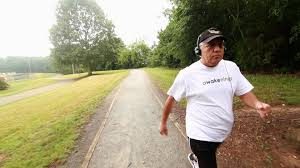By Angela Spontelli Gisselman (@ASGPhysio) and Christina Le (@yegphysio)
Systematic reviews are the gold standard for critically appraising clinically relevant literature. Twice yearly, BJSM hosts a competition to award the authors of the “best” systematic review(s). Based on prior BJSM competitions, the “best” systematic reviews are determined following an objective, systematic appraisal process (see the end of this blog for details).
Because of the quantity and high quality of systematic reviews submitted to BJSM, we divided this semi-annual contest into two categories – 1) Physical Activity Systematic Reviews, and 2) Sports Injury and Illness Systematic Reviews. In this blog, we highlight the systematic reviews that fall into the physical activity category.
(Follow this link to read about the Sports Injury and Illness Systematic Review finalists)
 The top 4 Physical Activity Systematic Review finalists published between July and December 2015 were:
The top 4 Physical Activity Systematic Review finalists published between July and December 2015 were:
- Costigan et al (2015). High-intensity interval training for improving health-related fitness in adolescents: a systematic review and meta-analysis
- Franco et al (2015). Older people’s perspectives on participation in physical activity: a systematic review and thematic synthesis of qualitative literature
- Hupin et al (2015). Even a low-dose of moderate-to-vigorous physical activity reduces mortality by 22% in adults aged ≥60 years: a systematic review and meta-analysis
- Martin et al (2015). Interventions with potential to reduce sedentary time in adults: systematic review and meta-analysis
And, the winner for the Best Injury and Illness Systematic review for July-December 2015 is:
Hupin et al (2015). Even a low-dose of moderate-to-vigorous physical activity reduces mortality by 22% in adults aged ≥60 years: a systematic review and meta-analysis
Dr. David Hupin and his colleagues targeted a growing area of concern: low physical activity participation in the aging population. With the majority of older adults (aged >60 years) failing to reach the current physical activity recommendations of 150 minutes per week of moderate-to-vigorous physical activity (MVPA), Hupin et al set out to determine if a lower dose of MVPA was effective in reducing mortality. The results of their meta-analysis revealed a reduction in all-cause mortality even in those who recorded a dose of MVPA below the recommendations. Older adults who performed less than 150 minutes per week still had a 22% reduction in mortality compared to those performing no activity. The valuable take-home message here is that even a small amount of MVPA can go a long way. Hupin et al advised to change physical activity standards to 15 minutes of MVPA, 5 days per week, as a more reasonable target for older adults to obtain. The jury applauds the authors for their rigorous methodological approach in selecting high quality studies which produced large sample sizes, extended follow-up periods, and strong homogeneity between studies.
All systematic reviews published between July 2015 and December 2015 were evaluated by two independent reviewers with the following criteria:
- PRISMA Guidelines (Methods): How well did the authors adhere to the internationally recommended report guidelines for systematic reviews?
- Clinical Relevance: Is the review’s topic highly relevant to the BJSM community of clinicians? Do the content and results have the potential to significantly impact clinical reasoning and practice?
- Introduction: Intriguing and Informative? Does the introduction provide a succinct description of the background literature and establish a distinct need for the systematic review?
- Results & Discussion: Comprehensive and well contextualized? How well did the authors critically evaluate and synthesize their results in the context of existing research? Did the authors address their study objectives and provide a thorough discussion of their findings?
- Conclusion: Clear and concise? Did the authors effectively communicate a concise take-home message that readers can feasibly incorporate into clinical practice? Was the conclusion accurate while acknowledging study limitations and guiding future research?
**************************
Angela Spontelli Gisselman (@ASGPhysio) is in her third and final year as a PhD candidate in Physiotherapy at the University of Otago in Dunedin, New Zealand. Angela received her Doctor of Physical Therapy from Duke University in 2011 and completed residency training at University of North Carolina to become a ABPTS board-certified orthopedic clinical specialist (OCS) in 2014. For her PhD research, she is investigating the role of monitoring the autonomic nervous system in the presence of musculoskeletal overuse injuries. Alongside her husband, she enjoys mountain biking, hiking, photography, and stargazing during her PhD study breaks.
Christina Le (@yegphysio) is a graduate of the MScPT program at the University of Alberta. Christina works as a physiotherapist at the Glen Sather Sports Medicine Clinic (GSSMC) in Edmonton, Canada. In addition to being a clinician, she serves as the GSSMC interdisciplinary knee team lead and FC Edmonton physiotherapist. She is currently pursuing a PhD with a focus on knee injury rehabilitation.